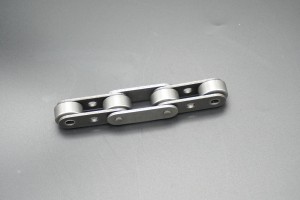Introduction to common heat treatment processes for chains
In the chain manufacturing process, heat treatment process is a key link to improve chain performance. Through heat treatment, the strength, hardness, wear resistance and fatigue life of the chain can be significantly improved to meet the needs of different application scenarios. This article will introduce in detail the common heat treatment processes for chains, including quenching, tempering, carburizing, nitriding, carbonitriding and other processes
1. Overview of heat treatment process
Heat treatment is a process that changes the internal structure of metal materials by heating, insulation and cooling to obtain the required performance. For chains, heat treatment can optimize their mechanical properties and keep them running stably under complex working conditions.
2. Quenching process
Quenching is one of the most common processes in chain heat treatment. The purpose is to improve the hardness and strength of the chain through rapid cooling. The following are the specific steps of the quenching process:
1. Heating
Heat the chain to an appropriate temperature, usually the quenching temperature range of the material. For example, for carbon steel chains, the quenching temperature is generally around 850℃.
2. Insulation
After reaching the quenching temperature, maintain a certain insulation time to make the internal temperature of the chain uniform. The insulation time is usually determined according to the size and material properties of the chain.
3. Quenching
The chain is quickly immersed in a quenching medium such as cold water, oil or salt water. The choice of quenching medium depends on the material and performance requirements of the chain. For example, for high-carbon steel chains, oil quenching is usually used to reduce deformation.
4. Tempering
The quenched chain will produce greater internal stress, so tempering treatment is required. Tempering is to heat the quenched chain to an appropriate temperature (usually lower than Ac1), keep it warm for a certain period of time, and then cool it. Tempering can reduce internal stress and increase the toughness of the chain.
III. Tempering process
Tempering is a supplementary process after quenching. Its main purpose is to eliminate internal stress, adjust hardness and improve processing performance. According to the tempering temperature, tempering can be divided into low-temperature tempering (150℃-250℃), medium-temperature tempering (350℃-500℃) and high-temperature tempering (above 500℃). For example, for chains that require high toughness, medium-temperature tempering is usually used.
IV. Carburizing process
Carburizing is a surface hardening process, which is mainly used to improve the hardness and wear resistance of the chain surface. The carburizing process includes the following steps:
1. Heating
Heat the chain to the carburizing temperature, usually 900℃-950℃.
2. Carburizing
Place the chain in a carburizing medium, such as sodium cyanide solution or carburizing atmosphere, so that carbon atoms diffuse to the surface and inside of the chain.
3. Quenching
The carburized chain needs to be quenched to solidify the carburized layer and increase the hardness.
4. Tempering
The quenched chain is tempered to eliminate internal stress and adjust the hardness.
5. Nitriding process
Nitriding is a surface hardening process that improves the hardness and wear resistance of the chain by forming a layer of nitride on the surface of the chain. The nitriding process is usually carried out at a temperature of 500℃-600℃, and the nitriding time is determined according to the size and performance requirements of the chain.
6. Carbonitriding process
Carbonitriding is a process that combines the advantages of carburizing and nitriding, and is mainly used to improve the hardness and wear resistance of the chain surface. The carbonitriding process includes heating, nitriding, quenching and tempering.
7. Surface quenching process
Surface quenching is mainly used to improve the hardness and wear resistance of the chain surface while maintaining the toughness inside. Surface quenching can be divided into induction heating surface quenching, flame heating surface quenching and electrical contact heating surface quenching according to different heating methods.
1. Induction heating surface quenching
Induction heating surface quenching uses the principle of electromagnetic induction to quickly heat the chain surface to the quenching temperature and then quickly cool it. This method has the advantages of fast heating speed and controllable quenching layer depth.
2. Flame Heating Surface Quenching
Flame heating surface quenching is to use flame to heat the surface of the chain and then quench it. This method is suitable for large chains or local quenching.
VIII. Aging Treatment
Aging treatment is a process that improves the properties of metal materials by natural or artificial means. Natural aging treatment is to place the workpiece at room temperature for a long time, while artificial aging treatment is achieved by heating to a higher temperature and keeping it warm for a short time.
IX. Selection of heat treatment process
The selection of a suitable heat treatment process requires a comprehensive consideration of the material, use environment and performance requirements of the chain. For example, for high-load and high-wear-resistant chains, quenching and tempering processes are common choices; while for chains that require high surface hardness, carburizing or carbonitriding processes are more suitable.
X. Control of heat treatment process
The quality control of the heat treatment process is crucial. In actual operation, parameters such as heating temperature, holding time and cooling rate need to be strictly controlled to ensure the stability and reliability of the heat treatment effect.
Conclusion
Through the above heat treatment process, the performance of the chain can be significantly improved to meet the needs of different application scenarios. When selecting chains, international wholesale buyers should understand the heat treatment process of the chains based on the specific application scenarios and performance requirements to ensure that the purchased products can meet their usage needs.
Post time: Jul-14-2025

